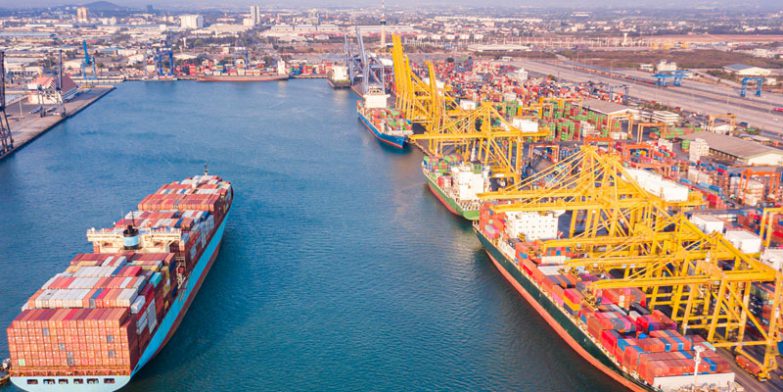
The OECD, WTO and IMF are predicting that global trade growth could more than double in 2024, with falling inflation triggering lower interest rates, to stimulate domestic markets and consumer demand, though they also warn about the risks to trade caused by geopolitical tensions, regional conflicts and economic uncertainty.
OCEAN
Increased volumes at Mediterranean and Asian ports is creating congestion, which is reducing vessel schedule reliability and impacting available capacity.
Delays in transit mean lower empty container availability in key regions and ports, with ship bunching and congestion spreading to Asian ports including Port Klang, Shanghai, Qingdao, Guangzhou, and Shenzhen.
The critical westbound Asia to Europe route is currently short by 10% of its required capacity and without those 36 vessels schedule reliability is slipping.
The latest data shows that schedule reliability has declined by 2.5%, with the most reliable carrier at 59% reliability rate and the lowest 44.2%.
Far East westbound blank sailing programs remain in June, impacting 10% to 30% of market capacity weekly.
Continuing vessel space demand, combined with a possible early peak season, and a scarcity of equipment at origin have created a price bubble, with average spot rates from the Far East to North Europe and the US West Coast (USWC) increased by nearly a third in May, while the US East Coast (USEC) saw an increase of over 20%.
Compared to a year ago, spot rates on the Far East to North Europe trade have surged nearly 200%, with rates to the USWC up 214%, the Mediterranean up 100%, and the USEC up 130%.
AIR
Ongoing demand for vessel space from Asia, the potentially early peak season, continuing eCommerce demand, and the Red Sea situation are driving up demand and rates for air freight from Asia Pacific and the Middle East.
Last month, air freight spot rates from Middle East and South Asia (MESA) origins to Europe more than doubled compared to 2023 levels. Tonnages and rates from Asia Pacific origins were also well above last year’s figures.
Import rates into Europe from Asia have been gradually increasing since the beginning of Q2, while outbound rates remain relatively stable, though about 20% up year on year.
Despite rates falling from other regions, this strength of demand from Asia Pacific and MESA origins kept overall average global rates steady in week 22, up around 1%, week on week (WoW) and up 7%, YoY, which is 4% above pre-Covid levels in 2019.
Spot rates from North America and Europe to China fell -32% and -23% YoY respectively in May and the transatlantic market also experienced spot rate declines in both directions, as summer passenger travel increased the availability of belly capacity.
Driven by demand for eCommerce and high-tech manufactured goods air cargo spot rates from China to Latin America have more than doubled in the last five years, with the average spot rate from China to Brazil more expensive than China to the US.
ROAD
The truckload market in the United States has been struggling with too much capacity since early 2022 as post-COVID demand weakened. However, the first week of June saw outbound tender volumes surge by over 7%, marking one of the strongest demand increases to start the summer shipping season since 2019. Despite this apparent spike in demand, rates have not followed suit because there is sufficient market capacity.
The spot price index is below the contract price index in Europe, indicating weak demand.
However, price softening is not as fast and may be reversing, suggesting a potential improvement in demand, which is necessary for rate normalisation. Recent GDP numbers for the UK and eurozone show growth slightly above forecasts, driven by improved consumer and business sentiment.
The upcoming Paris Olympics and Euros 2024 are boosting volumes in France and Germany, the continent’s biggest economies, leading to a downward shift in road freight capacity.
Whatever challenges your supply chain may face, our commercial vehicle fleet and the price and capacity agreements we have in place with our long-term partner air and ocean carriers mean that we continue to deliver resilient and reliable supply chain solutions.
Our purchase order management and supply chain tracking technology support the most demanding global trading regimes, providing transparency and control.
EMAIL Andy Costara to learn more and see how our technology can support your supply chain.





